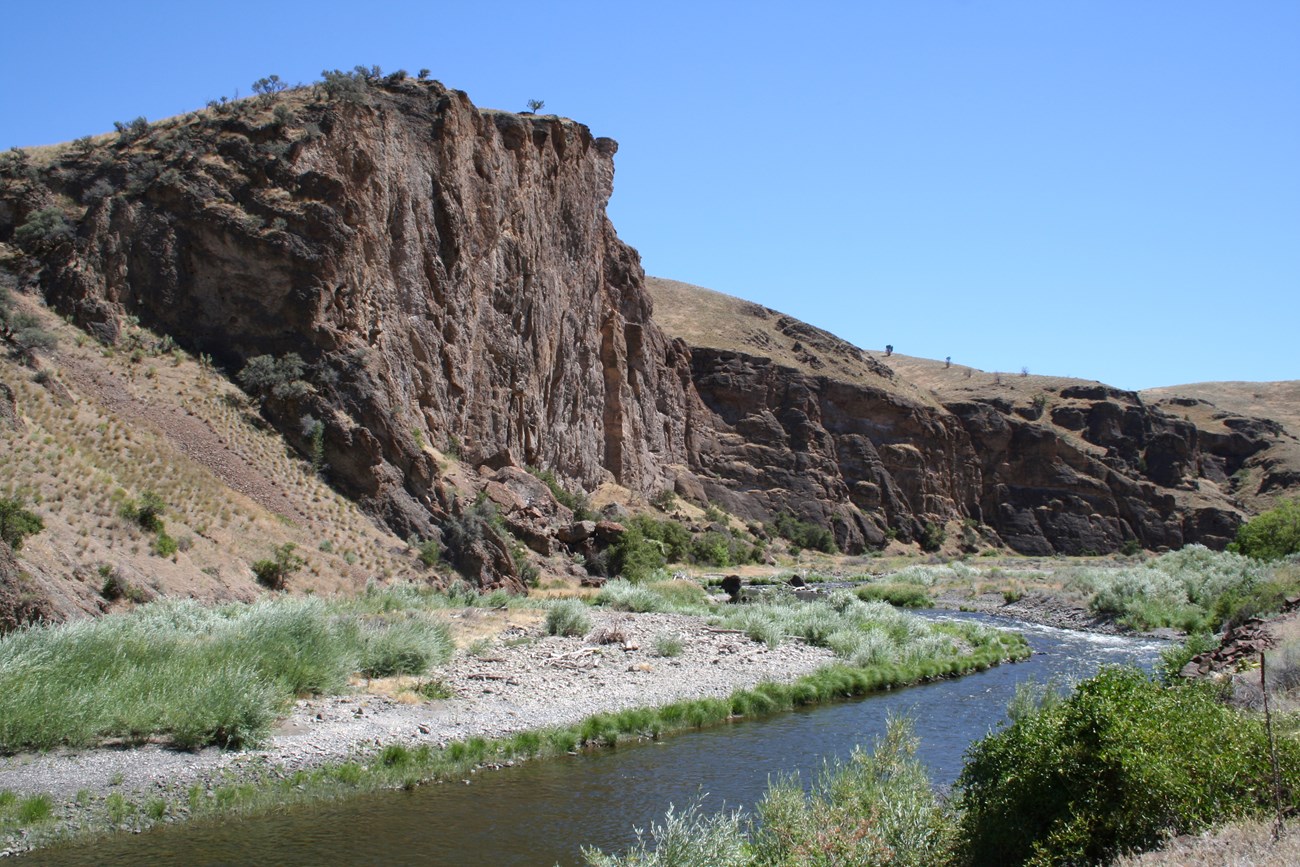
NPS Photo
Importance and Issues
Stream channels and the surrounding landscape are inextricably connected. Stream channels are a product of regional geomorphology, hydrology, riparian vegetation, upland vegetation, land use, and water use. Within a stream, channel characteristics profoundly influence habitat for aquatic macroinvertebrates and fish. This connection between the surrounding landscape, stream channels, and aquatic habitat makes monitoring channel characteristics an important aspect of natural resource monitoring in our network parks. In addition, stream channel monitoring helps us better understand our integrated water quality monitoring. Due to the relationship between riparian vegetation and stream channel morphology, field efforts for both are coordinated closely.
Monitoring Objectives
- Determine the status of bank stability, percent undercut, bank angle, percent fines, and other key stream channel characteristics for selected wadeable stream reaches..
- Determine the direction and magnitude of change over time for bank stability, percent undercut, bank angle, percent fines, and other key stream channel characteristics, and establish whether those changes reflect impacts from management or land use activities.
- Determine the condition of key stream channel attributes within selected wadeable UCBN stream reaches.
- Determine if changes in stream channels, specifically bank erosion, are likely to negatively impact cultural resources within the floodplain at Big Hole National Battlefield.
Source: NPS DataStore Saved Search 724. To search for additional information, visit the NPS DataStore.
Source: NPS DataStore Saved Search 720. To search for additional information, visit the NPS DataStore.
Source: NPS DataStore Saved Search 886. To search for additional information, visit the NPS DataStore.
Last updated: August 29, 2018
